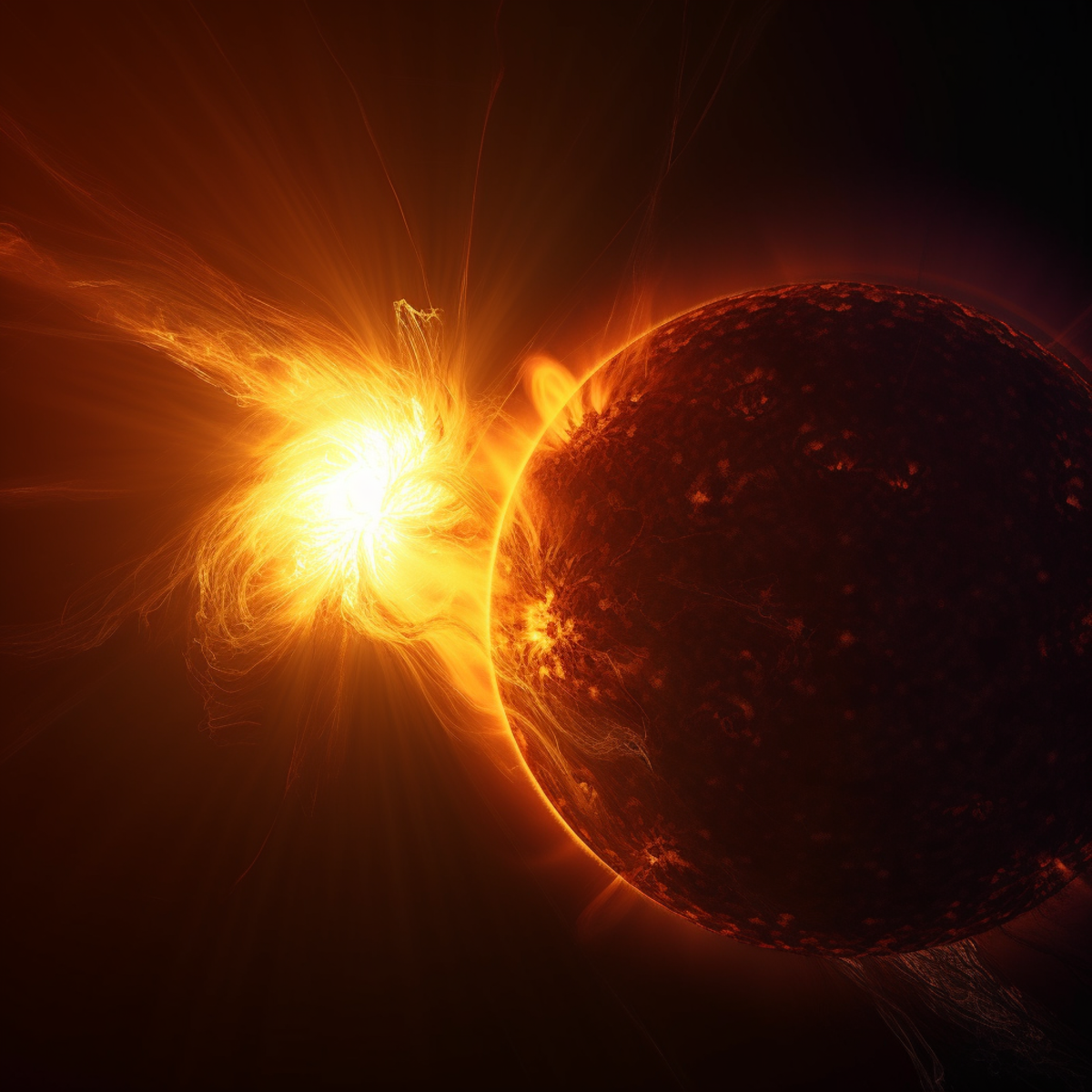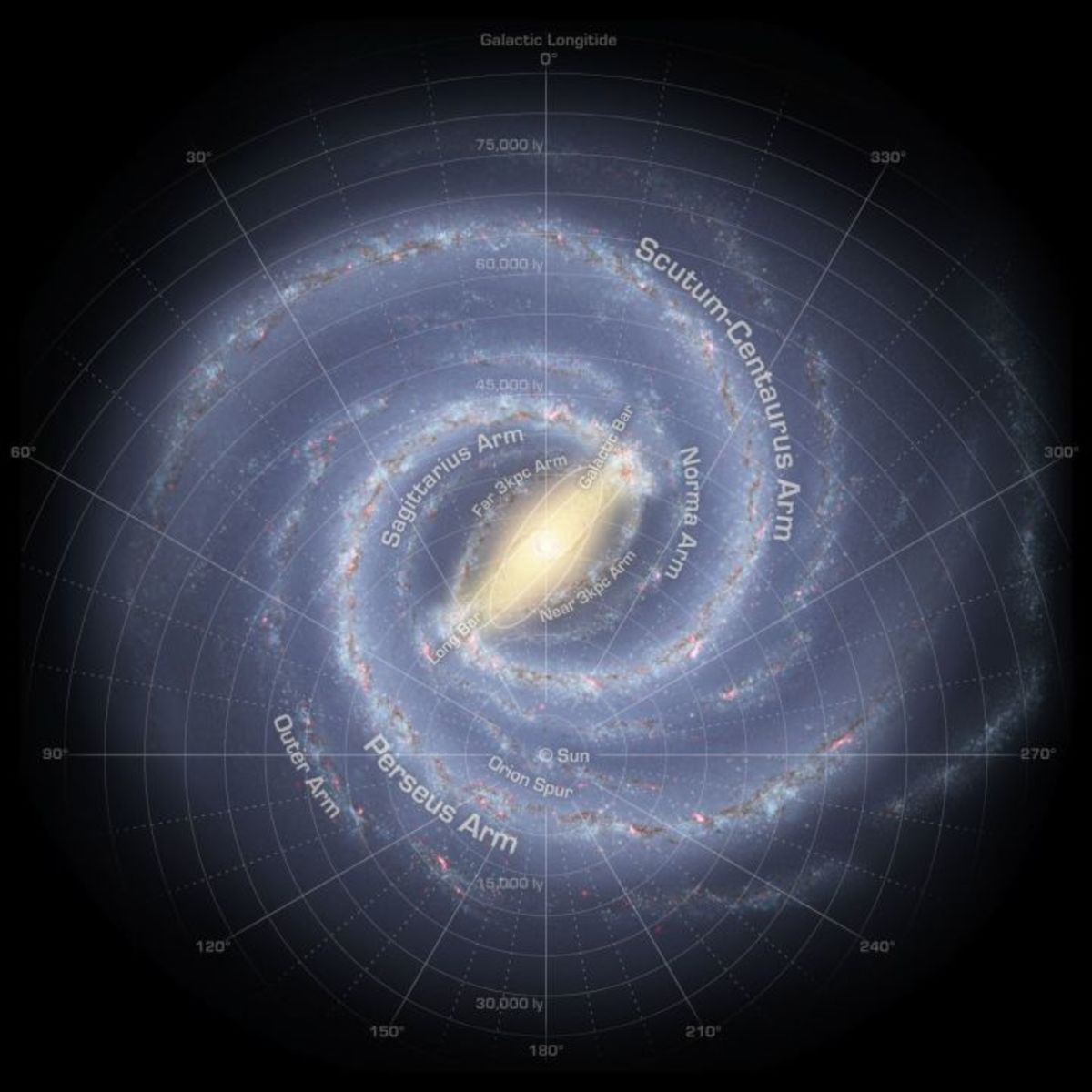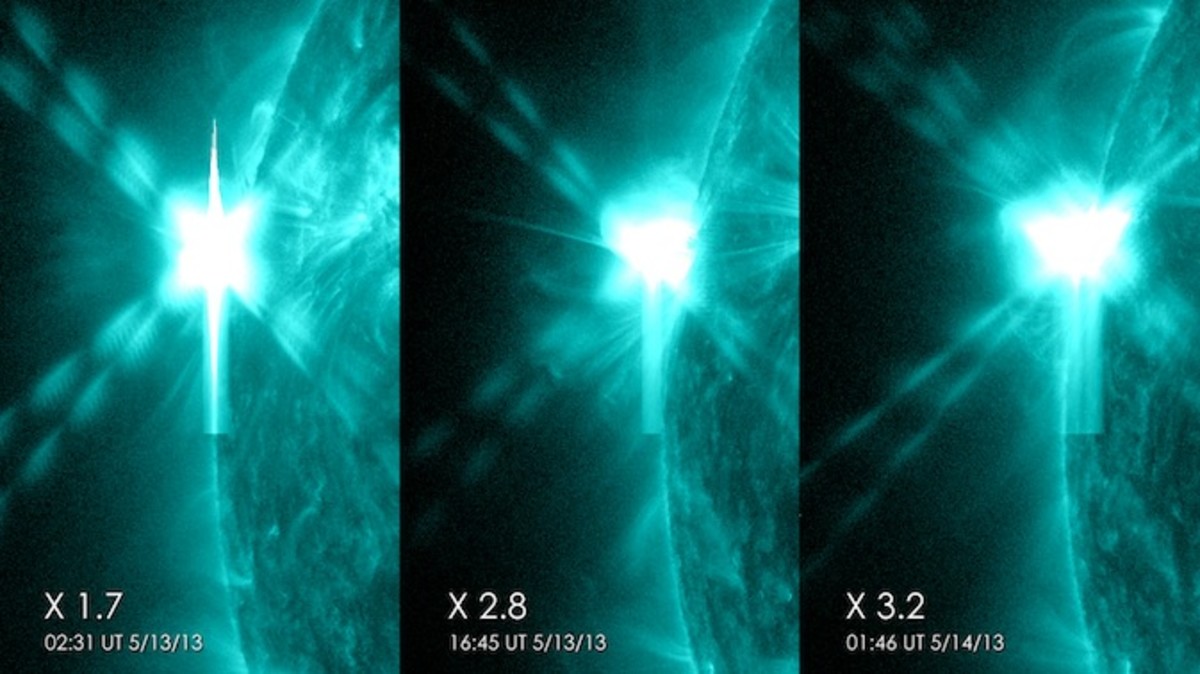The Space Debris
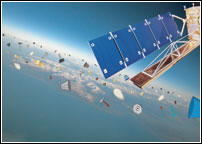
For quite some time now, environmentalists have been raising hue and cry about the pace with which atmospheric pollution is increasing and the damage it is doing to the ozone layer. The grim situation, however, is no longer confined to our planet only and has widened further beyond, all the way to the outer space.
Scientists have been conducting research on the effects of space missions and the preservation of the atmosphere out there. They are now confronting another challenge in the form of debris in space which can turn into a big hazard.At present, the US Space Surveillance Network is making use of some ground-based radars and optical and infrared sensors to find out more about the accumulating debris in the space. The traceable size of an object in space is approximately 10 centimetres for a low earth orbit and one metre for the geostationary orbit. Among these itemised objects, only six per cent are active satellites while more than 40 per cent are particles of disintegrated satellites and upper stages of rockets. Space debris has now become one of the most important projects of Space Sciences institutes all over the world.What Is Space Debris?
Space debris signifies the presence of material present in space as the result of various space missions. Since the start of space exploration with Sputnik 1 in 1957, there have been many a space mission, which have led to an accumulation of pollutants and junk not only on the surface of earth, but in the outer space as well.
Many space shuttles setups are left in the orbit after they reach their destination or accomplish successful results. Satellites, spacecrafts and mission operations are also discarded at the end of the mission. While this process may appear harmless, this can have serious consequences because risky items such as separation bolts, jettisoned spacecraft parts, solar cells, solid fuel fragments, lens caps, momentum flywheels, nuclear reactor cores, clamp bands, auxiliary motors, launch vehicle fairings, and adapter shrouds are released in the space.Space debris also includes the junk left by astronauts and space scientists during or after their missions, for example, astronaut Ed White on the first American space walk left his glove, while Michael Collins forgot his camera and left a garbage bag and a tooth brush near the Gemini 10 spacecraft.With the commencement of space age, more than 124 break-ups have been verified, and more are believed to have occurred. The debris research committee of Nasa has discovered that many of these collisions might have occurred due to the collision of the debris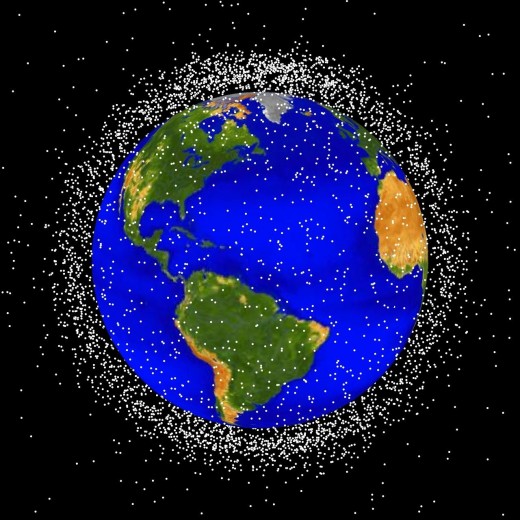
A Few Facts About The Debris
This debris mutely circles the globe at the speed of up to 25,000 miles per hour with altitudes ranging from hundreds to thousands of miles. Nasa has to frequently replace windows on space shuttles which have been damaged by objects as small as a flake of paint.
A separate disintegration has been recorded due to the collision between the debris. According to the research committee scientists, around 70,000 objects, of about two centimetres in size, have been identified, located around 850-1,000 kilometres above the surface of earth. Space debris is mostly concentrated in low earth orbit, however, some go beyond the geosynchronous orbit. This is the one in which a satellite rotates around earth at the same rate as the planet spins. At geosynchronous altitude - which is about 35,900 kilometres - the relative speed of debris movement is lower, up to 720kmph or 432mph.
Due to the presence of debris in space, there is a chance of material degradation occurring as a result of atomic oxygen, solar heating and solar radiation producing particulates such as paint flakes and bits of multilayer insulation.
The launch of solid body rocket motors which function to increase satellite orbits has resulted in creating debris like motor casings, aluminum oxide exhaust particles, nozzle slag, motor-liner remnants, fragments of solid fuel and used cone bits produced from the erosion during the burn.
Although, most of the debris in space is small, but it travels extremely fast, as under altitude of 2,000km the average relative impact speed is 36,000kmph or 21,600mph. At such speed levels, collisions can become inevitable and extremely hazardous. The object breaks up in space due to detonations and collisions with other objects. It can happen when propellant and the oxidising substance involuntarily get mixed, the remaining propellant becomes over-pressurised because of excessive heating.
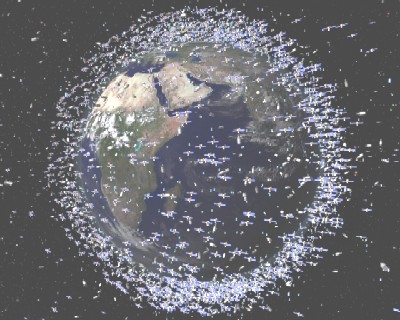
What Can It Lead To?
Space scientists hypothesise that the increasing number of space debris can one day shatter a big spacecraft into many small pieces and can trigger a chain reaction - a gradually propagating series of collisions which can progress to centuries, extending disorder in space environment. Scientists have increased their efforts in making the spacecrafts capable enough to face such a situation. Space stations are now provided with radars and other optical monitoring devices, which can identify the location and size of space debris.
Accumulation of pollutants and debris in space is an international problem, the solution of which needs international cooperation and co-ordination. The Inter-Agency Space Debris Coordination Committee (IASDC) - whose members are Japan, Nasa, and the Russian Space Agency - gives a forum for dialogue and coordination of technical space debris issues. These space debris research organisations work at attaining a better understanding of the significant issues, especially the environment of our planet and its future evolution along with the measures for protection and improvement.
The research on space debris is focusing on some important aspects such as the development of a meteoroid and debris reference model, radar measurements of mid-size debris, optical measurements and analysis of spacecraft surfaces returned from space.
To prevent the excessive and unrestrained growth of space debris, more effective and more efficient alleviation measures must be taken. These will mostly comprise the removal of rocket bodies and spacecrafts from space upon completion of their missions, proper removal of used and worn out junk and careful usage and disposal of the utilised items of human use.





